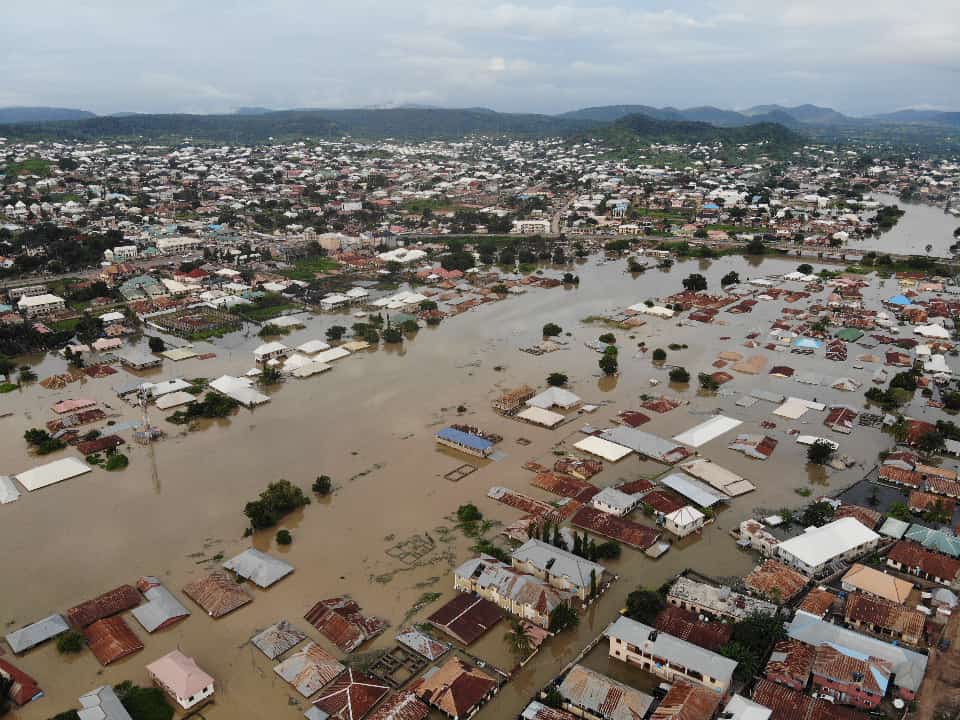As climate talks are ongoing at the COP27 conference of the UN in Egypt, a study has shown how climate change affects less-developed countries and how they suffer from the warming that industrialized nations largely cause.
According to scientists, heavy rains that led to recent deadly floods in Nigeria and neighbouring countries were made about 80 times more likely by human-caused climate change than they were made naturally.
The floods which were linked to an extremely wet rainy season killed more than 600 people in Nigeria and more than 200 in Niger and Chad. The scientists who are from World Weather Attribution, also said climate change had made the season, which runs from April to October, 20 per cent wetter overall than it would have been in a world without warming.
The findings come as negotiators are currently meeting in Egypt at the U.N. climate summit. The issue of “loss and damage”, a debate on whether industrialized countries should pay less-developed nations for the effects of climate change, is high on the agenda. Nigeria and many other African countries produce relatively little carbon dioxide emissions that contribute to warming yet increasingly suffer from climate-related disasters like floods and heat waves.
Read also: COP27: Activist urges Nigeria to shift to renewable energy
“This is a real and present problem, and it’s particularly the poorest countries that are being hit very hard,” said one of the researchers, Maarten van Aalst, director of the Red Cross Red Crescent Climate Center.
“It’s not up to us as scientists to tell negotiators what to do,” said Dr. van Aalst, who is also attending the climate talks, known as COP27. But this study and others show that climate disasters “are not something for the future, they’re happening today,” he said. “So we do need those solutions on loss and damage and we need particularly to deliver in those countries where that vulnerability is highest.”
The analysis looked at two aspects of the seasonal rains in the region this year: average rainfall for the entire season over a large drainage area, mostly in Chad, and spikes of extreme rainfall over weeklong periods in another drainage area, mostly in Nigeria.
Like similar studies by this and other groups, the researchers used observational data as well as climate models that simulate both the current world, where emissions of greenhouse gases since the 19th century have raised temperatures by about 1.1 degree Celsius, or 2 degrees Fahrenheit, and a hypothetical world where no emissions, and thus no warming, occurred. This study has yet to be peer-reviewed and published in a journal, but the techniques used have been peer-reviewed many times before.
Comparing results from the two models, the researchers were able to determine the influence of climate change on the rains. That influence appeared to be greater on the overall season, where climate change made such a high average rainfall 80 times more likely. Climate change made the heavy short-duration rains only twice as likely, the researchers found.
Floods are a common occurrence in the rainy season in West Africa. However, these were the worst in decades in Nigeria and some of the other countries as nearly 1.5 million Nigerians were displaced, vast stretches of farmland were inundated, and fuel and food distribution were disrupted. Some communities are just recovering from the damages they suffered during the flood.
The researchers said there were other factors that contributed to the disaster, including poverty, military conflicts and land-use changes, especially the increasing settlement of flood plains by growing populations. In Nigeria, the flooding was also made worse by poor water management, specifically uncoordinated releases of water from a large dam in neighbouring Cameroon.
But the influence of climate change was clear, said Friederike Otto, a climate scientist at Imperial College London. Such an extremely rainy season would have been very rare in a world without climate change, she said, but now it has about a 10 per cent chance of occurring in any given year.
And with the planet continuing to warm, “that also means that going forward we will see more of these very intense, rainy seasons in the region,” Dr Otto said.
Story was adapted from the New York Times.
